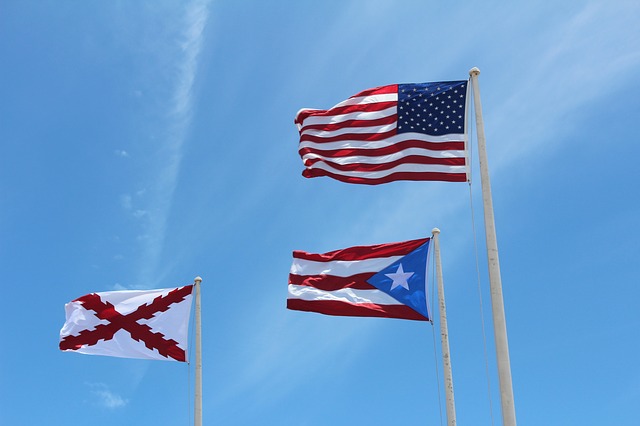by Jeffrey Tannenbaum, Bloomberg Opinion
When Hurricane Maria devastated Puerto Rico, it cut short nearly 3,000 lives, displaced thousands of families, and subjected the commonwealth to the longest energy blackout in U.S. history. This tragedy invited a new vision for Puerto Rico’s battered electric grid, and I hoped that a central tenet of the rebuilding effort would be an aggressive move toward safe, abundant and resilient clean energy.
This is not some romantic desire for a Caribbean clean energy paradise. It is rooted in a practical vision. Compared with the antiquated grid Maria crippled, a clean energy system would withstand hurricanes better, create good jobs, and reduce the island’s century-long dependence on oil and gas shipped in by sea. Besides, the electricity would be cheaper, unleashing growth that would lift living standards and reduce Puerto Rico’s dependence on Washington.
Any visions of a renewable energy future for Puerto Rico, however, just took a huge step backward. In its recently released planning guide, the Puerto Rico Electric Power Authority, known as Prepa, called for building three massive gas import terminals and to burn gas to power much of the island. These plants would lock Puerto Ricans into decades of costly electricity and leave them vulnerable to hurricanes and reliant on seaborne gas shipments. Over time, this infrastructure would look even less sensible, as renewable energy technology gets cheaper.
Why am I so confident that renewable energy offers Puerto Rico a better alternative? Because of the confluence of four factors. First, improvements in solar panels and battery storage make this technology much cheaper than it was just a few years ago. Second, Puerto Rico has excellent solar irradiance, strong winds and plenty of hydropower. Over the next decade, the island could generate more than half of its power needs from these clean energy sources when combined with storage, efficiency and grid management technologies. Third, renewable energy in Puerto Rico would displace outdated infrastructure that suffered years of neglect even before Maria dealt a debilitating blow. Finally, there are enough interested investors to easily cover the approximately $5 billion dollars of capital that is needed.
One critical ingredient is missing: leadership — from Governor Ricardo Rossello and the utility regulator known as the Puerto Rico Energy Bureau — for a plan unshackling Puerto Rico from commercial interests that profit from the antiquated notion that Puerto Rico must import fossil fuels to create electricity.
The Integrated Resource Plan (IRP) put forward by Prepa does call for solar power and battery storage. But these provisions are insufficient and not completed until 2022. Prepa claims that its plan is “customer-centric,” yet it is strangely silent about how to promote rooftop solar panels and batteries, which are fast becoming standard mainland options. A better vision would call for immediate investment in solar and wind, customer-centric power, and refurbishment of hydropower. This new approach, coupled with energy efficiency, could generate half of the island’s power needs without any new gas investments.
If this vision cannot find its way into the IRP, Puerto Rico will also have squandered a brilliant opportunity to create thousands of much needed high-skilled jobs and reduce unemployment, which stands at 8 percent, double the national average.
Solar power generates less than 2 percent of the island’s power and employs fewer than 2,000 people. There is plenty of room for growth: The effort to achieve 50 percent clean energy could create more than 20,000 jobs.
The old way of thinking has also frustrated efforts to pass S.B. 1121, a bill that legislates an aggressive transformation toward renewable energy. The bill was developed after extensive public consultation and passed in December by the Puerto Rican Senate. After being stuck in a conference committee, a single unified text has been hammered out, but has yet to receive a vote. S.B. 1121 wisely sets high renewable energy targets, promotes efficiency and phases out coal. Most importantly, it grants the regulator much needed power. The bill could be improved further by providing for clear efficiency targets and allowing for the utility regulator to have equal representation from the executive and legislative branches and civil society. A regulator that is not subject to political whim is a critical benefit that Puerto Rico has never enjoyed.
As a seasoned investor and clean energy entrepreneur, I have seen firsthand the jobs that clean energy can create and how inexpensive solar power has become. But I have also learned that market forces alone cannot engineer a transition. Even when renewable energy makes the most commercial sense, as it does in Puerto Rico (where I have no financial interest in any energy projects), an effective transition requires public sector leadership. Private investors will remain on the sidelines until they see clear government commitment. To do this, the IRP should look to the future, not to the past, and S.B. 1121 should be signed into law.
Governor Rossello, Puerto Rico’s energy regulator and legislators have a remarkable opportunity to usher in an era of cheaper electricity, energy independence, grid resilience and job creation. Three million long-suffering U.S. citizens in Puerto Rico deserve it.





